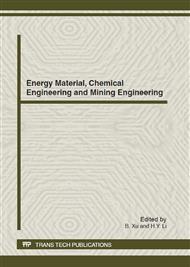p.3
p.9
p.13
p.18
p.22
p.27
p.31
p.39
p.43
Study on CO2 Emission Constraint Based on New Energy Materials for Generation Permits Trade
Abstract:
Generation permits trade plays a key role in the economic generation dispatch. The application of new energy materials has a positive influence on the generation fuel mix, which offers cleaner power option for generation permits trade. An optimization model on generation permits trade is established to promote the development of renewable energy and the lowest generation cost of a certain unit commitment. Power demand, ramp-up limit, real power of a unit, new energy materials, and a certain emission limit are applied as the constraints of the model. The process of generation permits trade is a cooperative game. An optimized profit allocation model is also established using Shapley value to effectively allocate the profits among the units participating in the generation permits trade.
Info:
Periodical:
Pages:
22-26
Citation:
Online since:
October 2012
Authors:
Price:
Сopyright:
© 2012 Trans Tech Publications Ltd. All Rights Reserved
Share:
Citation:


